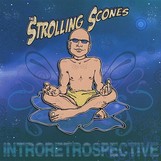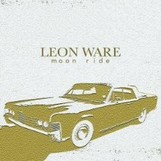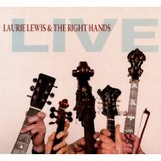FEATURES
Remembering Les Paul
As news of his recent passing spread, reaction was swift and heartfelt. His name is synonymous with Gibson’s early solidbodies, and for a time he was one of America’s most popular, accomplished electric guitarists. We recount his history and gather thoughts from notable players.
The Epiphone Pacemaker
Before you label this combo a “poor man’s Princeton,” peek under the hood; there’s not a Fender-certified tube in sight. And in true alternatives like this, that’s where the fun begins. By Dave Hunter
Fender’s Precision Bass
It was arguably more influential than Fender’s Tele or Strat. But its evolutionary history is more like Gibson’s Les Paul, given that it reached its preferred configuration only after a few upgrades. By George Gruhn and Walter Carter
Pete Anderson
Guitars, solo blues…
Musical partner to Dwight Yoakam, he’s a pioneer in the roots-rock genre and was an early champion of Americana acts. But his new CD marks a return to his blues roots. We talk it over, and go deep into the stories of his most prized guitars. By Ward Meeker
Coppock Guitars
Vintage Rarities from the Pacific Northwest
Until last March, a photo of an enigmatic logo on a headstock was all that had been seen of the brand. But one when surfaced in Seattle, subsequent research unearthed the back-story about the instruments and their maker. By Peter Blecha
The Gibson Marauder M-1
Every once in awhile, Gibson asks itself, “Why don’t we make a bolt-neck guitar!” So they do, and the result is almost always interesting – and almost always a commercial flop. A case in point is this nifty little guitar from 1978. By Michael Wright
The Standel 400S
In the early days of the electric guitar, Standel earned a reputation for building high-quality amps. But one of the more curious and convoluted tales of the ’60s guitar boom involves the company’s efforts to market guitars carrying its brand. By Willie G. Moseley
DEPARTMENTS
The VGHall of Fame Giveaway
Win a Keeley Electronics pedal package!
Vintage Guitar Price Guide
Builder Profile
Surreal Amplification
Upcoming Events
Vintage Guitar Classified Ads
Dealer Directory
Readers Gallery
FIRST FRET
Reader Mail
News and Notes
Montreal Guitar Show, Rock Hall Designates “Austin City Limits,” ZZ Top Alters Tour, EVH Recuperating, In Memoriam, more!
Chris Dreja
Yardbird Recall
By Pete Prown
Jack Wilkins
Self-Made Man
By John Heidt
Ask Zac
By Zac Childs
Stu Cook
Keeping the Legend Alive
By Willie G. Moseley
Alphonso Johnson
Big Bass for Weather Report, Santana, and More
By Pete Prown
Bryan Clark
Doing Things Differently
By Steven Stone
Ian Anderson
Tools of the Trade
By Willie G. Moseley
Bryan Sutton
Capturing Live Magic
By Steven Stone
COLUMNS
The (Way) Back Beat
Saga of the Lost Supersounds
By Peter S. Kohman
Q&A With George Gruhn
Fretprints
Johnny Ramone
By Wolf Marshall
“401K” Guitars
Gauging Your Economic “IQ”
By Gil Hembree
Acousticville
A Very Punchy Performance
By Steven Stone
TECH
Talkin’ Amps With…
Andy Brauer: Sleeper Amps, Part III
By David Jung
Dan’s Guitar Rx
Something Old, Something New, Part II
By Dan Erlewine
Shop of Hard Knocks
“Jag-Stang,” Pre-CBS
By Will Kelly
REVIEWS
The VG Hit List
CD, DVD, and Book Reviews: George Harrison, Robben Ford, Jefferson Airplane, Albert King/Stevie RayVaughan, Motley Crue: A Visual History, more!
Check This Action
L.A. Action
By Dan Forte
Vintage Guitar Gear Reviews
Mesa Boogie Electra-Dyne, Tremcaster SSH, EMG PX/JX pickups, E-H Big Muff Pi/Voice Box, Surprise Sound Labs Rock Block, Eastman El Rey ER-1
Gearin’ Up!
The latest cool new stuff!






